Autonomous camera traps for insects provide a tool for long-term remote monitoring of insects. These systems bring together cameras, computer vision, and autonomous infrastructure such as solar panels, mini computers, and data telemetry to collect images of insects.
With increasing recognition of the importance of insects as the dominant component of almost all ecosystems, there are growing concerns that insect biodiversity has declined globally, with serious consequences for the ecosystem services on which we all depend.
Automated camera traps for insects offer one of the best practical and cost-effective solutions for more standardised monitoring of insects across the globe. However, to realise this we need interdisciplinary teams who can work together to develop the hardware systems, AI components, metadata standards, data analysis, and much more.
This WILDLABS group has been set up by people from around the world who have individually been tackling parts of this challenge and who believe we can do more by working together.
We hope you will become part of this group where we share our knowledge and expertise to advance this technology.
Check out Tom's Variety Hour talk for an introduction to this group.
Learn about Autonomous Camera Traps for Insects by checking out recordings of our webinar series:
- Hardware design of camera traps for moth monitoring
- Assessing the effectiveness of these autonomous systems in real-world settings, and comparing results with traditional monitoring methods
- Designing machine learning tools to process camera trap data automatically
- Developing automated camera systems for monitoring pollinators
- India-focused projects on insect monitoring
Meet the rest of the group and introduce yourself on our welcome thread - https://www.wildlabs.net/discussion/welcome-autonomous-camera-traps-insects-group
Group curators
- @tom_august
- | he/him
Computational ecologist with interests in computer vision, citizen science, open science, drones, acoustics, data viz, software engineering, public engagement



- 8 Resources
- 53 Discussions
- 5 Groups



- 9 Resources
- 2 Discussions
- 9 Groups

- 0 Resources
- 7 Discussions
- 7 Groups
- @Rob_Appleby
- | He/him
Wild Spy
Whilst I love everything about WILDLABS and the conservation tech community I am mostly here for the badges!!



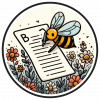

- 1 Resources
- 315 Discussions
- 11 Groups
Experienced Biologist with a Master of Science degree and 15 years of international experience in the fields of nature resource management, ecological restoration, and human rights in agriculture, forestry, and cattle ranching for sustainable production and sourcing
- 0 Resources
- 0 Discussions
- 5 Groups
Aarhus University
Biologist and Research Technician working with ecosystem monitoring and research at Zackenberg Research Station in Greenland





- 19 Resources
- 270 Discussions
- 7 Groups
- @HRees
- | Him/His
WILDLABS & Fauna & Flora
WILDLABS - Programme Development Manager, keen interest in bats, hyenas and tech!





- 13 Resources
- 3 Discussions
- 6 Groups
- @jmflenniken
- | he/him
Florida Fish and Wildlife Conservation Commission
- 0 Resources
- 0 Discussions
- 3 Groups
- @julia05
- | she/her
- 0 Resources
- 0 Discussions
- 3 Groups
- @AmyDennett
- | She/Her
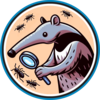
- 0 Resources
- 0 Discussions
- 1 Groups
Electronics Engineer working in the development of smart conservation technology solutions.

- 0 Resources
- 0 Discussions
- 9 Groups
- @Cwoodman
- | She, her
I work between academia and private technology development to meet the needs of conservation researchers. I am an owner of a conservation technology company and a PhD who researches how to save imperiled wild populations.

- 0 Resources
- 7 Discussions
- 3 Groups
Ocean Science Analytics
Marine mammal ecologist and online technical trainer



- 1 Resources
- 39 Discussions
- 7 Groups
- @cbnatphoto
- | He / Him
Clay Bolt is the Manager of Pollinator Conservation for World Wildlife Fund-US and a conservation photographer focused on supporting policy that protects insects from pesticides and other threats. Clay’s words and images have appeared in publications such as National Geographic M
- 0 Resources
- 1 Discussions
- 3 Groups
Interesting new methods to help improve insect detection "...this paper proposes three previously unused data augmentation approaches (gamma correction, bilateral filtering, and bit-plate slicing) which artificially...
31 August 2023
Apply for funding (£500,000-£750,000) to develop software systems, which will help to improve biodiversity monitoring by automating the analysis of images and videos
12 July 2023
Careers
Permanent and Full Time role at the UK Centre for Ecology & Hydrology
8 June 2023
The Department of Ecoscience, Aarhus University, invites applications for a postdoc position to strengthen our team on image recognition and deep learning in ecology. Specifically, the candidate will further develop...
9 May 2023
Postdoctoral position for 12 months initially, Cambridge University Agroecology Research Group.
6 April 2023
Recording from our last webinar on India-focused projects on insect monitoring, where we had researchers of Indian origin or researchers working in Indian organisations present their work on insect monitoring.
23 March 2023
New technology enabling the automated monitoring of moths has been put to rigorous testing in tropical conditions in Panama by an international team of researchers
22 February 2023
Are you excited by the potential for new technologies to help monitor the natural world? Do you enjoy communicating your passion for technology and nature with diverse audiences? We are seeking an enthusiastic...
2 February 2023
Are you stuck on an AI or ML challenge in your conservation work? Apply now for the chance to receive tailored expert advice from data scientists! Applications due 27th January 2023
18 January 2023
This position focuses on the ecology aspect of the project, while a second PhD in Ilmenau will be dealing with programming/AI development. Because of the high temporal resolution of our data, we can investigate how land...
9 January 2023
a technology-led solution to understanding the honeybees of the wasp world
8 December 2022
May 2025
September 2024
event
| Description | Activity | Replies | Groups | Updated |
|---|---|---|---|---|
| My most prized camera trap image - a hummingbird caught on camera! |
|
Autonomous Camera Traps for Insects, Camera Traps | 2 years 7 months ago | |
| Might be good to add this to the 'Automated Camera Traps for Insects' group |
|
Camera Traps, Autonomous Camera Traps for Insects | 2 years 8 months ago | |
| Have you considered creating a Kaggle competition? If you already have lots of images, and some that have been labelled, then this could be a good way to get people working on a... |
|
AI for Conservation, Autonomous Camera Traps for Insects, Camera Traps | 2 years 9 months ago |
Looking for interview participants for research on AI Conservation & the CBD
23 July 2024 1:45pm
Paid internship making software to ID moths
3 July 2024 3:34pm
Auto-Wake a Pi5 without a Pijuice! (Mothbox)
25 April 2024 5:44pm
6 June 2024 9:45am
Hi Andrew,
this is great!
Did you consider the Witty Pi 4 L3V7 Real Time Clock (RTC) und Power Management Modul für Raspberry Pi?
(This one has no included battery) or the one with the capacitor?
Greetings from Austria,
Robin
28 June 2024 3:39pm
A fantastic solution @hikinghack ! Those Pijuice boards are more expensive than the pis themselves!
It already sounds as if you've gotten the power use in sleep down a long way, but I thought I'd mention the Adafruit TPL5110 timer boards. They get draw down to around 20uA. They are limited to a 2-hour max interval so won't be useful for applications that only wake up once or twice a day etc., unless you write a script with something like a counter to count off multiples of wake up times. They are also controlled by resistors, so the timing won't always be perfect. When it's finished, our TimeLord board will allow a lot more sophisticated scheduling, be precise and I am pretty confident it won't cost anything like the juice! If you'd like to take some for a spin when they are ready just let me know (and same for anybody else).
I really like that pis and some Arduino's are including RTCs now (although the Arduino R4 internal RTC is crystal-less so might not be super accurate, not sure about the Giga)...makes things that little bit easier and less expensive.
Well done on the great solve!
Cheers,
Rob
Fully funded PhD in AI biodiversity monitoring
11 June 2024 1:07pm
€4,000 travel grants for insect monitoring an AI
6 June 2024 4:49pm
Testing, Deployment, Solar, Conferences - Mothbox update v3.21
24 May 2024 8:46pm
3 June 2024 10:35am
Thank you for the detailed post. This is amazing!
Have you experimented with ways of reducing power consumption? How much of the power is used by the LEDs vs the RPi? You could try having the LEDs on for less time, or less bright.
Julian
4 June 2024 7:54pm
The LEDs use most of the energy, the UV leds are about 12-15 watts. the pi hangs out around 3 watts. and the white flashing LEDs use about 10 watts each, but we reduced their time to like .8 seconds for a flash photo, so they aren't as much of a big deal.
you basically need a lot of power to make a really bright thing to attract the bugs, but we are testing out some more efficient UV leds
5 June 2024 10:23pm
I was thinking that you might be able to reduce the amount of time the lights were on by blinking them, but this paper seems to show that flickering mostly reduces the number of specimens attracted, though it affects some orders more than others, and, rarely, it increases the number attracted. On the other hand, the numbers of insects captures only seemed to go down by around 50% even with quite extreme flickering (10% duty cycle I.e. light only on 10% of the time) and if that had a big effect on how long the battery lasted it might be worth it, as you could run more capturing sessions between charges.
New WILDLABS Funding & Finance group
5 June 2024 3:24pm
5 June 2024 4:14pm
6 June 2024 1:38am
6 June 2024 4:16am
Computational Entomology Webinar III: Processing liquid samples
22 May 2024 12:40am
Share Your Work in a Conservation Technology Video
17 May 2024 9:06pm
Insect cameras in The Inventory
1 May 2024 9:26pm
2 May 2024 2:02pm
Hey @JakeBurton , nice work with The Inventory!
This is very aligned with some internal efforts going on in our community to map out devices, but also data and models eventually. It would be great if we find a way to make this two interoperable. We are still in the (very) alpha development phases, so it is quite open, but it would be super helpful to have some insight about the under-the-hood data structure that The Inventory is relying on, so we can figure out good ways to reliably map or info onto them.
Happy to chat further or set up a meeting!
@qgeissmann👀
3 May 2024 2:13pm
Thanks very much @LucaPego! Just to clarify, 'Products' does cover hardware, but it also includes software and databases as well. Basically anything that you can take and use in your work. Sounds like we should also be including models in that as well!
It would be great to see more databases and software listed and reviewed on there. We would also be interested to learn more about your internal efforts in your community and what overlap there is for sure. Could we set up a meeting?
16 May 2024 3:16pm
Hey there @JakeBurton , sorry, I did not see your message!
Why don't you shoot me an email with some tentative availability to luca.pegoraro (at) wsl.ch, and we take it from there?
Again sorry for the delay!
Travel grants for insect monitoring an AI
3 May 2024 5:20pm
The Inventory User Guide
1 May 2024 12:46pm
Introducing The Inventory!
1 May 2024 12:46pm
22 July 2024 10:55am
23 July 2024 2:05pm
23 July 2024 2:53pm
Postdoc: Biologging & Camera Trap Data Integration
22 April 2024 10:10pm
WILDLABS AWARDS 2024 – MothBox
15 April 2024 5:06am
18 April 2024 10:39am
Already an update from @hikinghack:
19 April 2024 12:00pm
Yeah we got it about as bare bones as possible for this level of photo resolution and duration in the field. The main costs right now are:
Pi- $80
Pijuice -$75
Battery - $85
64mp Camera - $60
which lands us at $300 already. But we might be able to eliminate that pijuice and have fewer moving parts, and cut 1/4 of our costs! Compared to something like just a single logitech brio camera that sells for $200 and only gets us like 16mp, we are able to make this thing as cheap as we could figure out! :)

19 April 2024 12:54pm
Gotcha, well I look forward to seeing future iterations and following along with your progress!!
Mothbox v3.2 Updates - Solar, HDR, Wifi Hotspots, and More!
18 April 2024 4:58am
Useful Script to easily program the Pijuice and Schedule Raspberry Pi happenings
17 March 2024 3:10am
Useful Pi Script for Backing Up
1 March 2024 6:34pm
Mothbox + Mothbeam Update: 4
31 January 2024 7:09pm
15 February 2024 4:49pm
We did some more testing with the Mothbeam in the forest. It's the height of dry season right now, so not many moths came out, but the mothbeam shined super bright and attracted a whole bunch of really tiny things that swarmed a lot
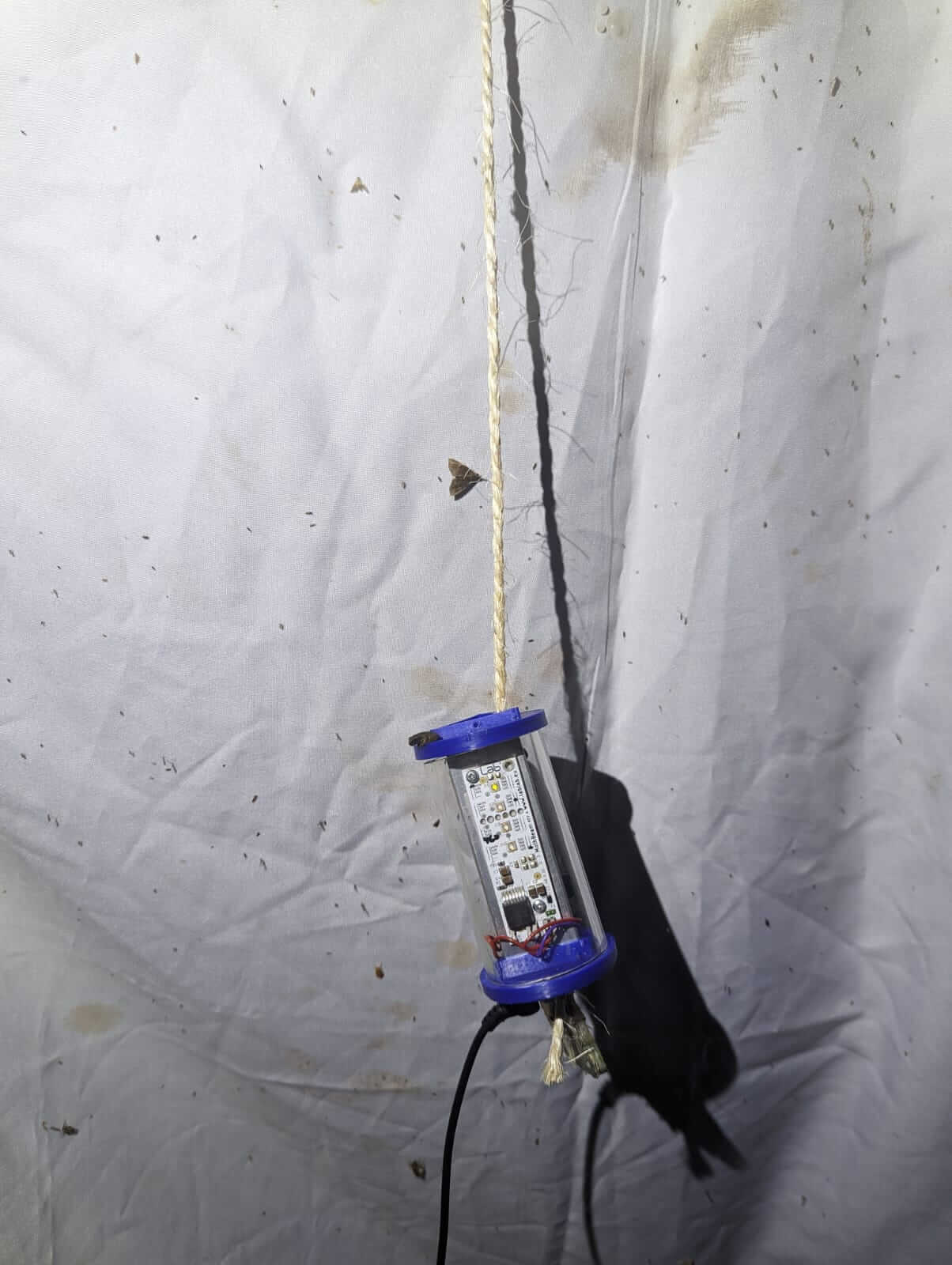
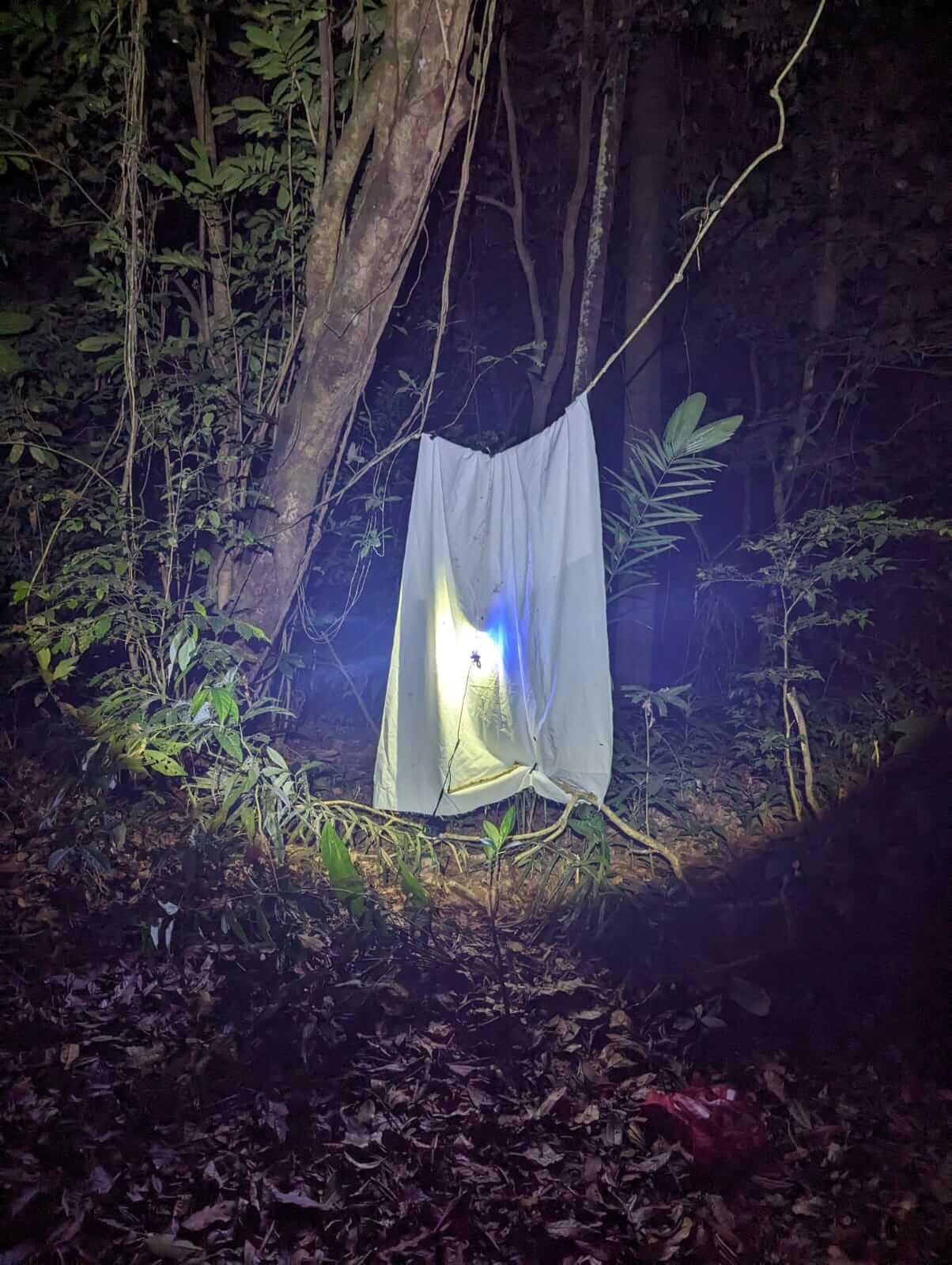
and some nocturnal bees
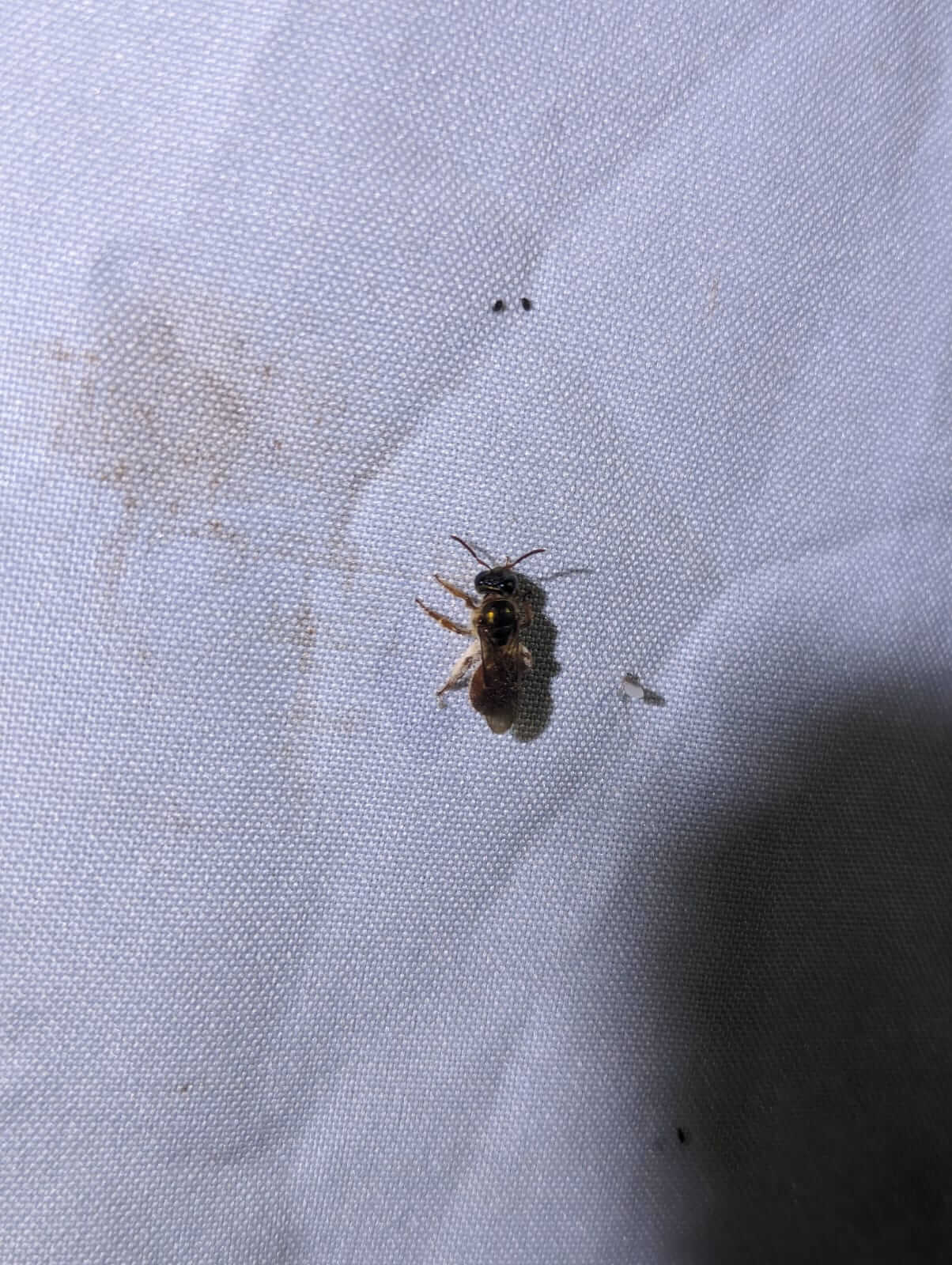
you could also see the mothbeam's aura from far away in the forest! so that was impressive!

I also tested out attaching a 12V USB booster cable to the Mothbeam, and it works
nice! So you can attach regular USB 5V battery packs to the mothbeam as well!
Computer Vision for Ecology Workshop 2025 Call for Applications
12 February 2024 9:29pm
Post-doc possition - Field spanning movement ecology, ecology of fear, bio-logging science, behavioral ecology, and ecological statistics
10 February 2024 7:20am
Underwater camera trap - call for early users
13 December 2023 11:44pm
23 January 2024 1:21pm
Many thanks for your contribution to the survey! We are now summarizing the list of early users and making our best to propose a newtcam to all in due time.
All the best!
Xavier
30 January 2024 10:20pm
Is there still time to apply?
31 January 2024 12:12pm
Hi Danilo, yes just in time ;-)
Computational Entomology Webinar II: Automated Pollinator Monitoring
23 January 2024 12:44pm
1st Joint International Scientific Conference
23 January 2024 8:34am
Testing Raspberry Pi cameras: Results
5 May 2023 5:11pm
5 September 2023 8:16am
And finally for now, the object detectors are wrapped by a python websocket network wrapper to make it easy for the system to use different types of object detectors. Usually, it's about 1/2 a day for me to write a new python wrapper for a new object detector type. You just need to wrap in the network connection and make it conform to the yolo way of expressing the hits, i.e. the json format that yolo outputs with bounding boxes, class names and confidence level.
What's more, you can even use multiple object detector models in different parts of a single captured image and you can cascade the logic to require multiple object detectors to match for example, or a choice from different object detectors.
It's the perfect anti-poaching system (If I say so myself :) )
10 January 2024 11:47pm
Hey @kimhendrikse , thanks for all these details. I just caught up. I like your approach of supporting multiple object detectors and using the python websockets wrapper! Is your code available somewhere?
11 January 2024 6:02am
Yep, here:
Currently it only installs on older Jetsons as in the coming weeks I’ll finish the install code for current jetsons.
Technically speaking, if you were an IT specialist you could even make it work in wsl2 Ubuntu on windows, but I haven’t published instructions for that. If you were even more of a specialist you wouldn’t need wsl2 either. One day I’ll publish instructions for that once I’ve done it. Though it would be slow unless the windows machine had an NVidia GPU and you PyTorch work with it.
Update 3: Cheap Automated Mothbox
31 December 2023 9:37pm
1 January 2024 9:18pm
This looks amazing! I'm currently work with hastatus bats up in Bocas, it would be really interesting to utilize some of these near foraging sites. Be sure to post again when you post the final documentation on github!
Also, Gamboa......dang I miss that little slice of heaven...
Super cool work Andrew!
Best,
Travis
5 January 2024 8:56pm
Thanks!!!
10 January 2024 11:33pm
Great work! I very much look forward to trying out the MothBeam light. That's going to be a huge help in making moth monitoring more accessible.
And well done digging into the picamera2 library to reduce the amount of time the light needs to be on while taking a photo. That is a super annoying issue!
Project support officer - Conservation Tech
11 December 2023 10:24pm
Project introductions and updates
2 August 2022 11:21am
29 March 2023 6:05pm
Hi all! I'm part of a Pollinator Monitoring Program at California State University, San Marcos which was started by a colleague lecturer of mine who was interested in learning more about the efficacy of pollinator gardens. It grew to include comparing local natural habitat of the Coastal Sage Scrub and I was initially brought on board to assist with data analysis, data management, etc. We then pivoted to the idea of using camera traps and AI for insect detection in place of the in-person monitoring approach (for increasing data and adding a cool tech angle to the effort, given it is of interest to local community partners that have pollinator gardens).
The group heavily involves students as researchers, and they are instrumental to the projects. We have settled on a combination of video footage and development of deep neural networks using the cloud-hosted video track detection tool, VIAME (developed by Kitware for NOAA Fisheries originally for fish track detection). Students built our first two PICTs (low-cost camera traps), and annotated the data from our pilot study that we are currently starting the process of network development for. Here's a cool pic of the easy-to-use interface that students use when annotating data:
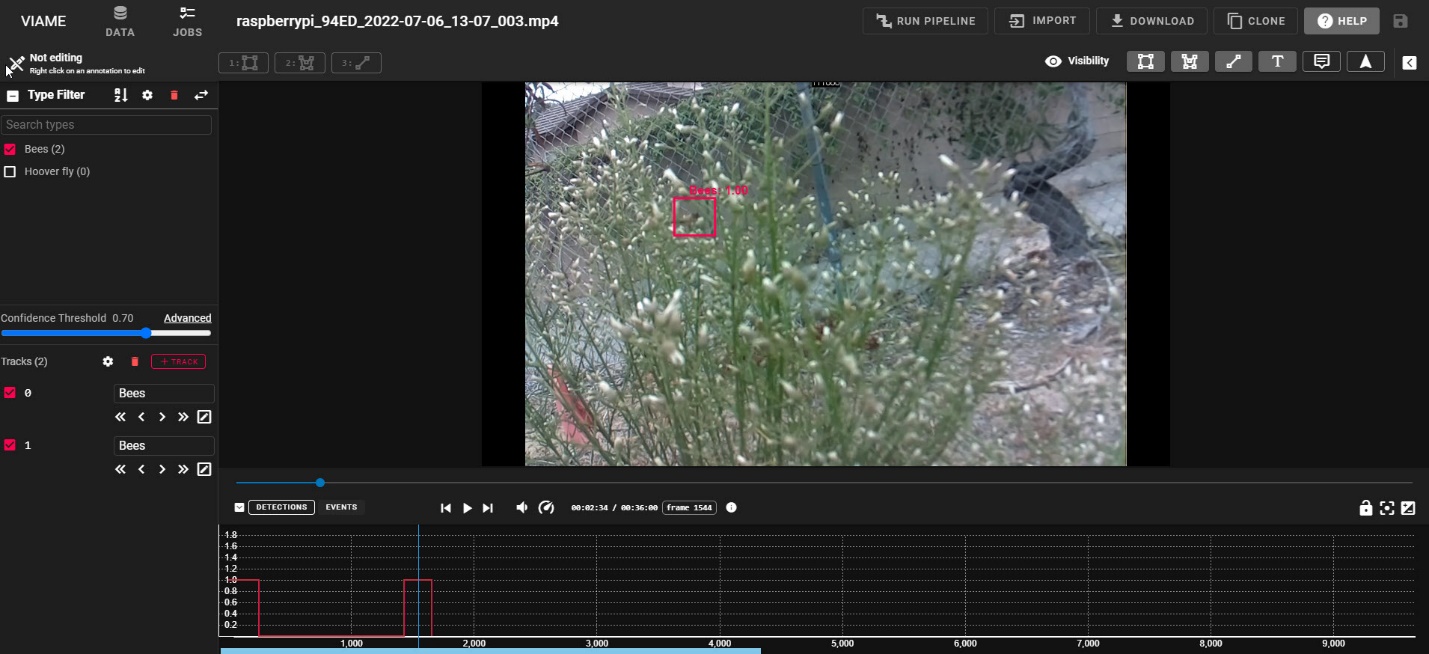
Figure 1: VIAME software demonstrating annotation of the track of an insect in the video (red box). Annotations are done manually to develop a neural network for the automated processing.
The goal of the group's camera trap team is develop a neural network that can track insect pollinators associated with a wide variety of plants, and to use this information to collect large datasets to better understand the pollinator occurrence and activities with local habitats. This ultimately relates to native habitat health and can be used for long-term tracking of changes in the ecosystem, with the idea that knowledge of pollinators may inform resources and conservation managers, as well as local organizations in their land use practices. We ultimately are interested in working with the Kitware folks further to not only develop a robust network (and share broadly of course!), but also to customize the data extraction from automated tracks to include automated species/species group identification and information on interaction rate by those pollinators. We would love any suggestions for appropriate proposals to apply to, as well as any information/suggestions regarding the PICT camera or suggestions on methods. We are looking to include night time data collection at some point as well and are aware the near infrared is advised, but would appreciate any thoughts/advice on that avenue as well.
We will of course post when we have more results and look forward to hearing more about all the interesting projects happening in this space!
Cheers,
Liz Ferguson
5 April 2023 10:00pm
HI, indeed as Tom mentioned, I am working here in Vermont on moth monitoring using machines with Tom and others. We have a network going from here into Canada with others. Would love to catch up with you soon. I am away until late April, but would love to connect after that!
10 December 2023 5:10pm
The preprint to our camera trap paper is now available at bioRxiv.
Two-year postdoc in AI and remote sensing for citizen-science pollinator monitoring
4 December 2023 12:21pm















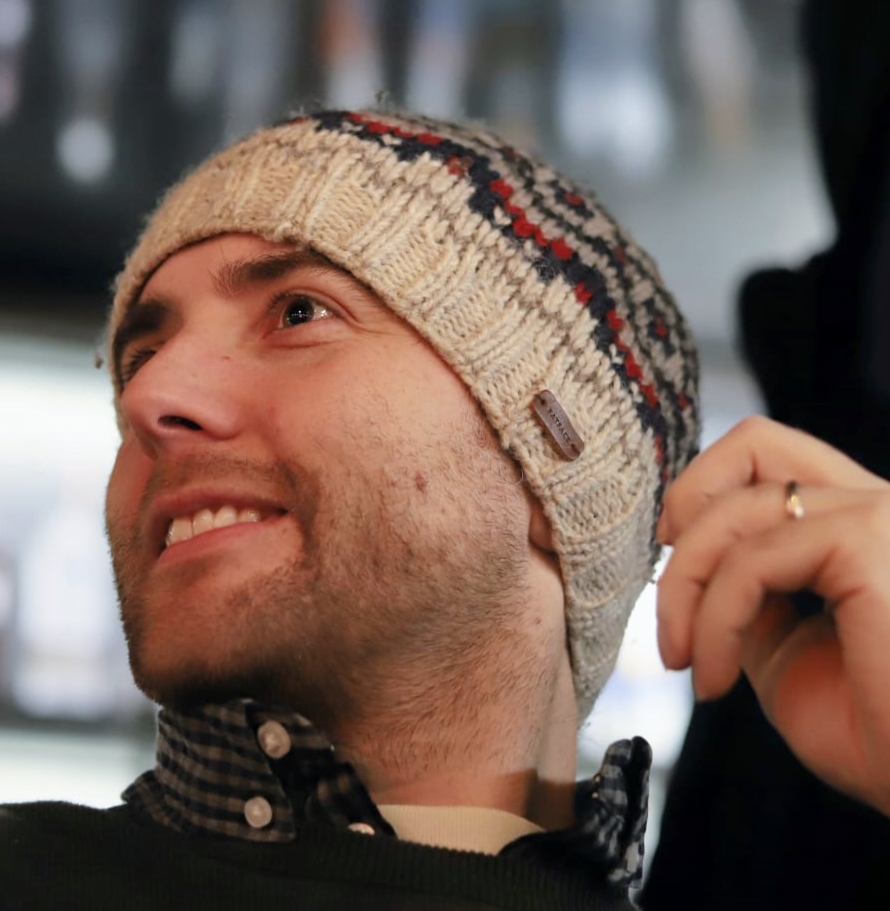





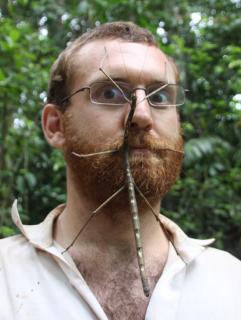



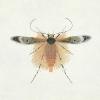











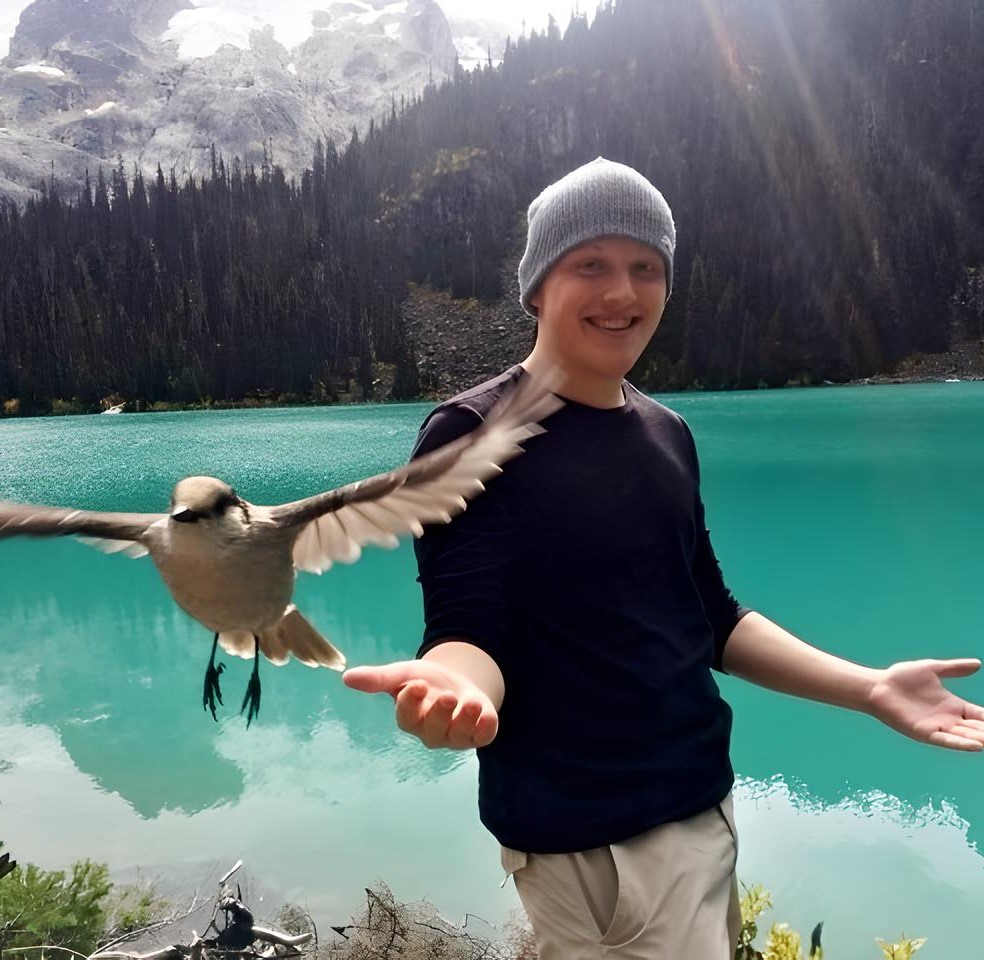




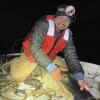

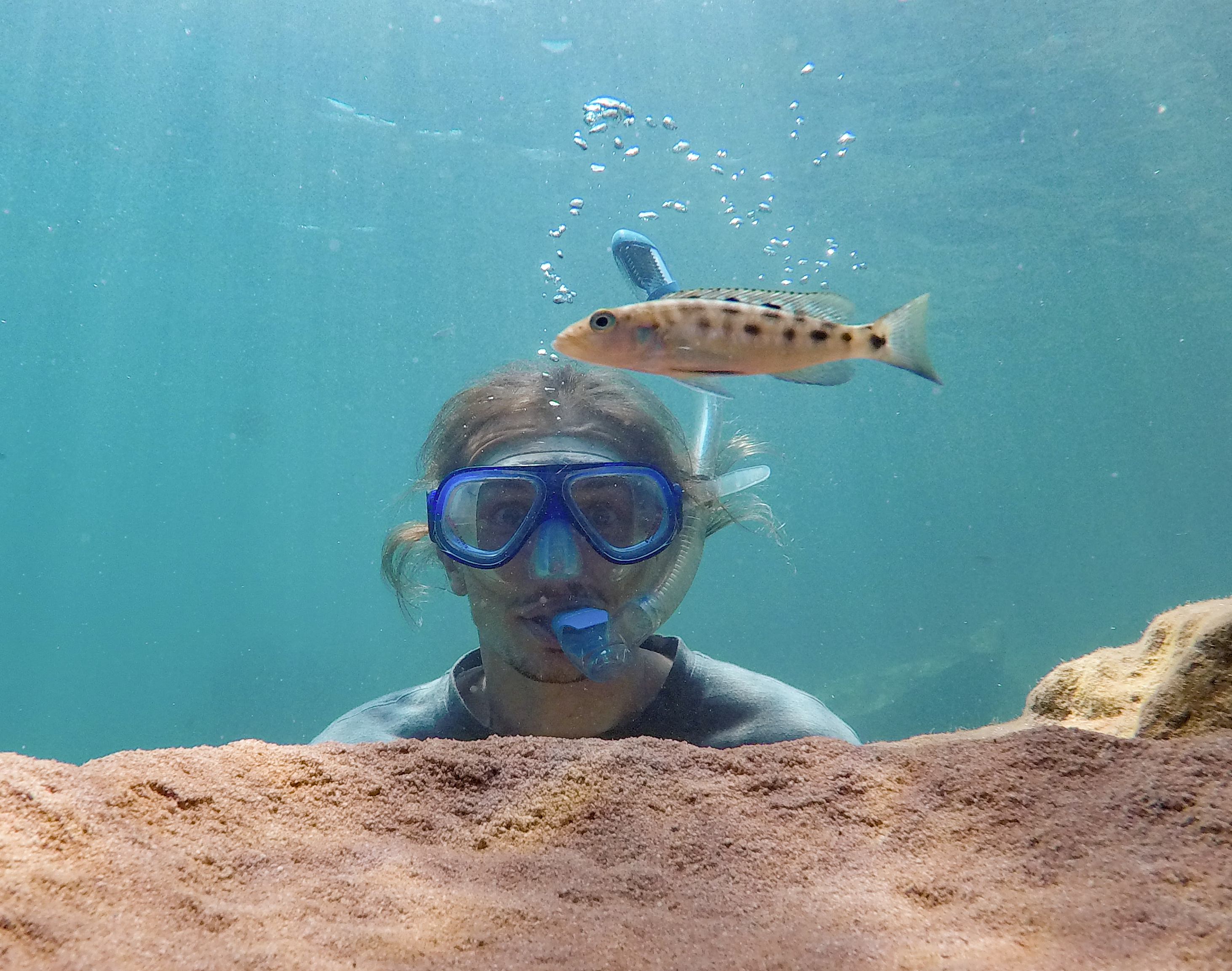











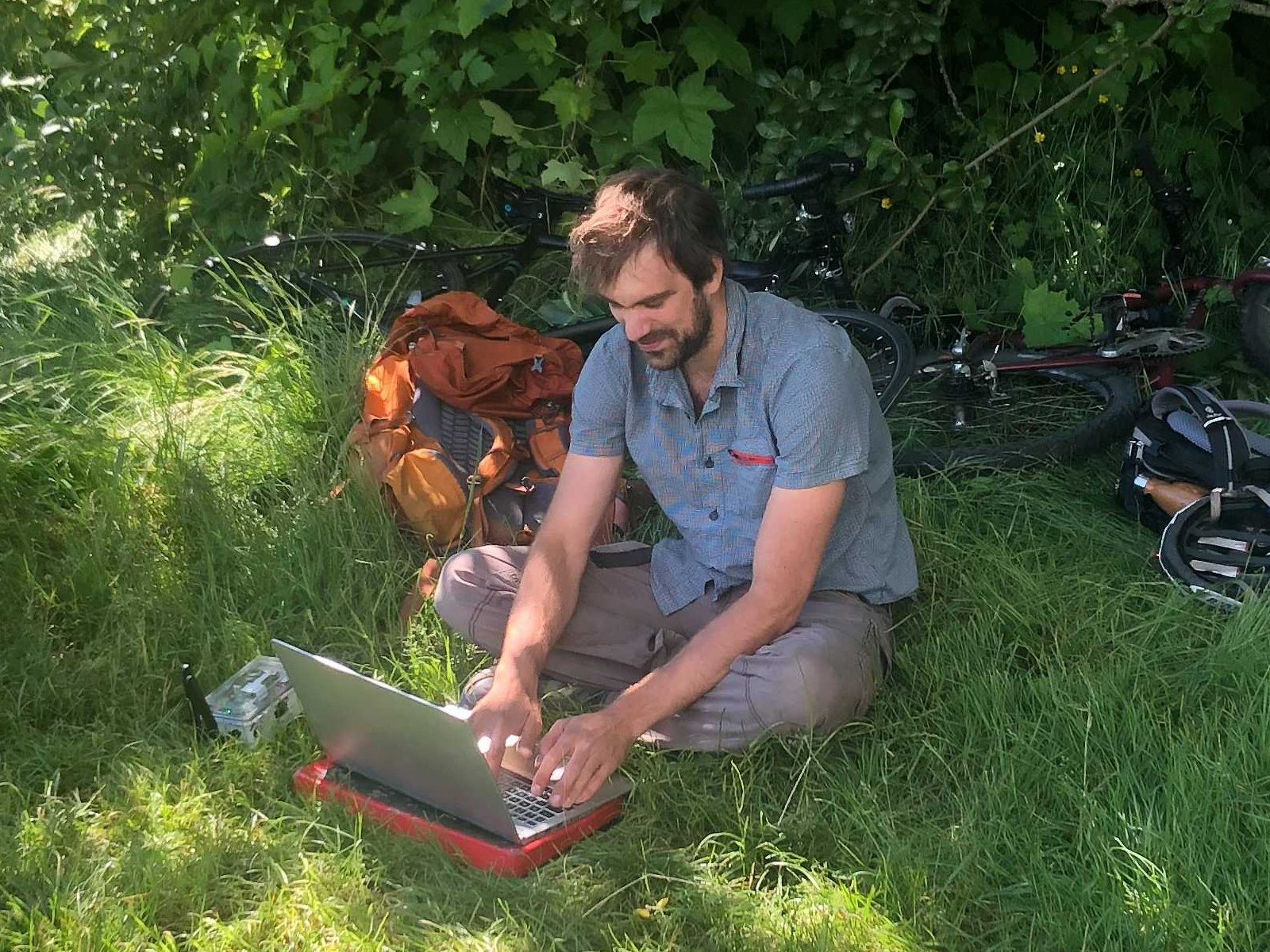
5 June 2024 9:56pm
That’s not a lot of power, which is great!